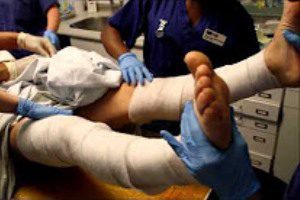
Prompted the state to seek improved training oversight and patient disclosure about the technology’s possible risks. Increasing robotic injury reports to Massachusetts health officials have prompted the state to seek improved training oversight and patient disclosure about the technology’s possible risks. The Massachusetts Board of Registration in Medicine released a statement on its web site that […]

Prompted the state to seek improved training oversight and patient disclosure about the technology’s possible risks. Increasing robotic injury reports to Massachusetts health officials have prompted the state to seek improved training oversight and patient disclosure about the technology’s possible risks.
The Massachusetts Board of Registration in Medicine released a statement on its web site that it had received “an increasing number” of patient complication reports associated with robotic surgery in the past two years, said Bloomberg News.
The Board did not name any particular company; however, Bloomberg News noted that the only robotic surgical system cleared in the United States for soft tissue procedures is manufactured by Intuitive Surgical Inc. Intuitive makes the da Vinci robotic system.
“Risks for robot-assisted surgery should be thoroughly explained” to patients and should include advisories regarding surgeon experience performing a particular robotic procedure, said the Board, according to Bloomberg News.
The Board described two robotic surgery complications: In a procedure for ulcerative colitis, a surgeon left rectal tissue in a patient’s abdomen; during a robotic hysterectomy and ovary removal, the bowel and left ureter were damaged, requiring multiple corrective procedures.
In robotic-assisted surgery, a surgeon sits at a console operating four robotic arms. Those arms manipulate small that are inserted into the patient’s body via tiny incisions. The system also utilizes a small, that displays the surgical area in 3-D video.
Robotic operations “carry risks of complications and poor outcomes” as in any surgery, the Board noted in its advisory; however, the credentialing of doctors “should be based on proven competency and proficiency, rather than completion of a set number of cases,” it wrote, according to Bloomberg News.
Robotic surgery devices, such as the da Vinci, have been named in mounting lawsuits and death reports. In fact, some 70 deaths have been linked to the da Vinci, according to a prior Bloomberg News review of so-called “informal” incident reports sent to U.S. regulators since 2009.
At least 10 lawsuits have also been filed in the last 14 months over robotic surgical systems.
Questions about the use of robotic surgery over other minimally invasive procedures, as well as an increase in adverse event reports, led to a safety probe of the da Vinci surgical robot by U.S. federal regulators.
The U.S. Food and Drug Administration (FDA) now seeks information from surgeons at key hospitals regarding complications they have seen with the da Vinci and the surgeries robotic surgery devices are best and least for, according to a recent Bloomberg News report.
Proponents say robotic surgery creates less scarring, pain, and blood loss; decreased complications; shorter hospital stays; and quicker recovery, in comparison to traditional open surgery that involves a larger incision and longer healing time. Critics say it is the minimal invassiveness of the procedures and not the robotics that offer the advantage.
Consider, for instance, laparoscopic surgery in which, video, and small incisions are utilized, at a significantly reduced cost, The Wall Street Journal wrote.
da Vinci Surgical Robot lawsuits fault aggressive marketing tactics used by Intuitive to convince hospitals to purchase the expensive robotic systems, and allege that a combination of design flaws inherent in the robot, as well as poor physician training on the device, have resulted in serious injuries.
Meanwhile, a 2011 study revealed that hospital web sites often overstate robotic surgery benefits. The analysis, which appeared in the Journal of Healthcare Quality by researchers at Johns Hopkins University
School of Medicine in Baltimore discovered that 86 percent of the web sites that mentioned robotic surgery claimed superiority; none described risks and web sites often utilized stock images or text provided by the manufacturer, said Bloomberg News. “Many hospital websites overestimate the benefits and underestimate the risks of robotic surgery, potentially misinforming patients,” the study authors concluded.
Most recently, The American College of Obstetricians and Gynecologists (ACOG) issued a statement advising women that robotic surgery is not the best option for routine hysterectomy. Dr. James Breedon, ACOG president, said that the optimal choice for most women is for the doctor to operate, using standard and not a robot, through the vagina, the Associated Press (AP) reported.
The personal injury attorneys at Parker Waichman offer free, no-obligation case evaluations. For more information, fill out our online form or call 1-800-YOURLAWYER (1-800-968-7529).


